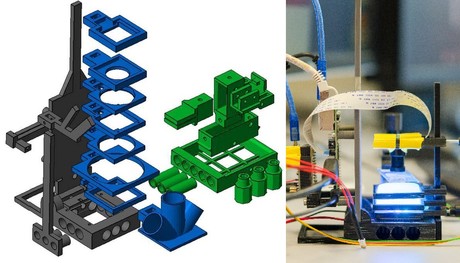Creating lab equipment with cheap electronics

The intricate equipment necessary for modern neuroscience experiments can easily cost tens of thousands of dollars when relying on commercially available solutions. Seeking an alternative, European researchers have used cheap electronic components to create ‘FlyPi’ — a low-cost imaging and microscope system for research, training and teaching.
FlyPi can perform many standard lab protocols, including light and fluorescence microscopy, optogenetics, thermogenetics and behavioural studies on small animals such as roundworms, fruit flies and zebrafish larvae. The design is based on a 3D-printed framework holding a Raspberry Pi computer and camera, cheap LEDs for lighting and simple lenses, and optical and thermal control circuits based on Arduino, an open-source microcontroller.
Taken together, the components cost less than €100 ($147) for the basic system and can be modified to suit the lab’s purposes. The system thus provides modular, low-cost options for research and assembly, with instructions for use made available free of charge via open-source platforms. It has been published in PLOS Biology.
“Many institutions around the world have little money to spend on costly equipment,” said Tom Baden,a co-author on the study. “We think it is very important that neuroscientific training and research open up to larger numbers of students and junior scientists. So we hope that, with open labware such as our FlyPi, we can offer a starting point.”
Nano framework unlocks printable 2D electronics
Researchers have developed a predictive framework for 2D-material exfoliation — enabling...
Light-based chip boosts AI power efficiency
Researchers have developed an optoelectronic silicon chip to perform convolution operations for...
Shining a UV light on next-gen computer chips
A recent study could help scientists and engineers build faster, cheaper and more eco-friendly...





